Intuitively, we all know you can sew different colors of alternating fabric squares together and wind up with a checkerboard print. Following this process can yield perfectly aligned pieces that match at each point. I am not interested in perfection.
I think the misaligned points of the patchwork that I gravitate towards and make are delectable, and I want to show you how I do it.
I make checkerboard fabric all the time, for hoodies and quilts and banners and t-shirts. I use my serger most often so that the seams are finished on the inside. If you don’t have a serger, I made a whole video about how to sew with stretchy fabric. You can find that here.
Step One: Pick Two Fabrics
Pick two fabrics that are made up of the same material in contrasting colors. For example, if you want to make a hoodie or sweatshirt, use hoodies and sweatpants and sweatshirts. I always use existing clothing to make my new clothes.
Step Two. Cut Two Rectangles (or Squares)
Take the two contrasting colors, and cut two rectangles or squares that are roughly the same size.
Step Three. Cut Out Strips.
Lay both of these pieces of fabric on top of each other an cut out lengthwise strips. They don’t have to be exact but you want them to be sisters.
Step Four. Sew Right Sides Together.
Next, you want to sew these strips together in an alternating pattern. Create one long unit.
It is important at this step to make sure that the first strip and the last strip are different colors.
Step Five. Rotate and Cut Strips.
Rotate the fabric unit so that the strips are horizontal to you. Cut equal strips as before. Imagine that you are creating the squares in the checkerboard.
Step Six. Rotate and Sew.
Now, take every other strip and rotate it 180 degrees, so that you start to form the checkerboard pattern. Then, take each of these strips and sew them together, not trying too hard to align each point.

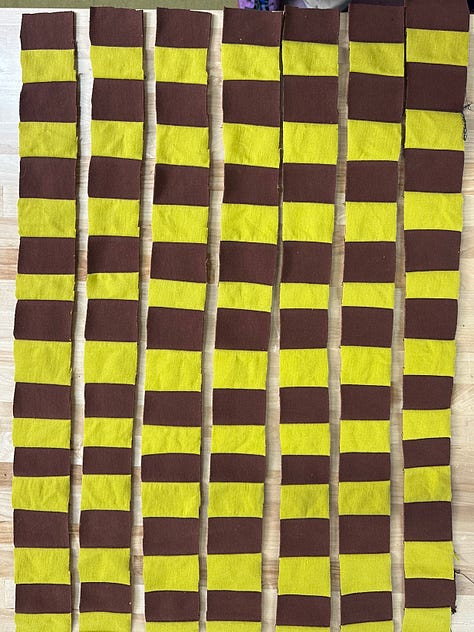
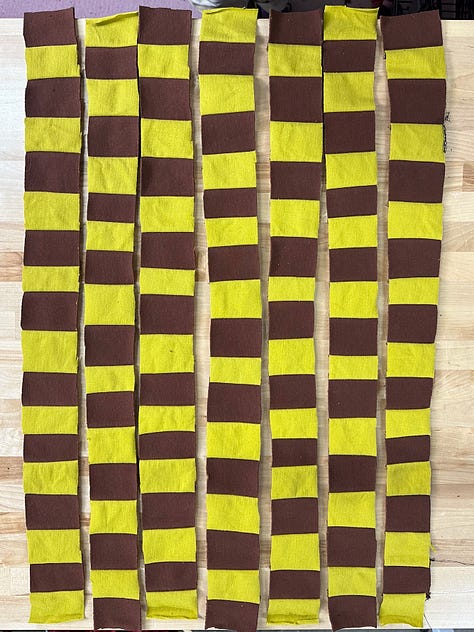



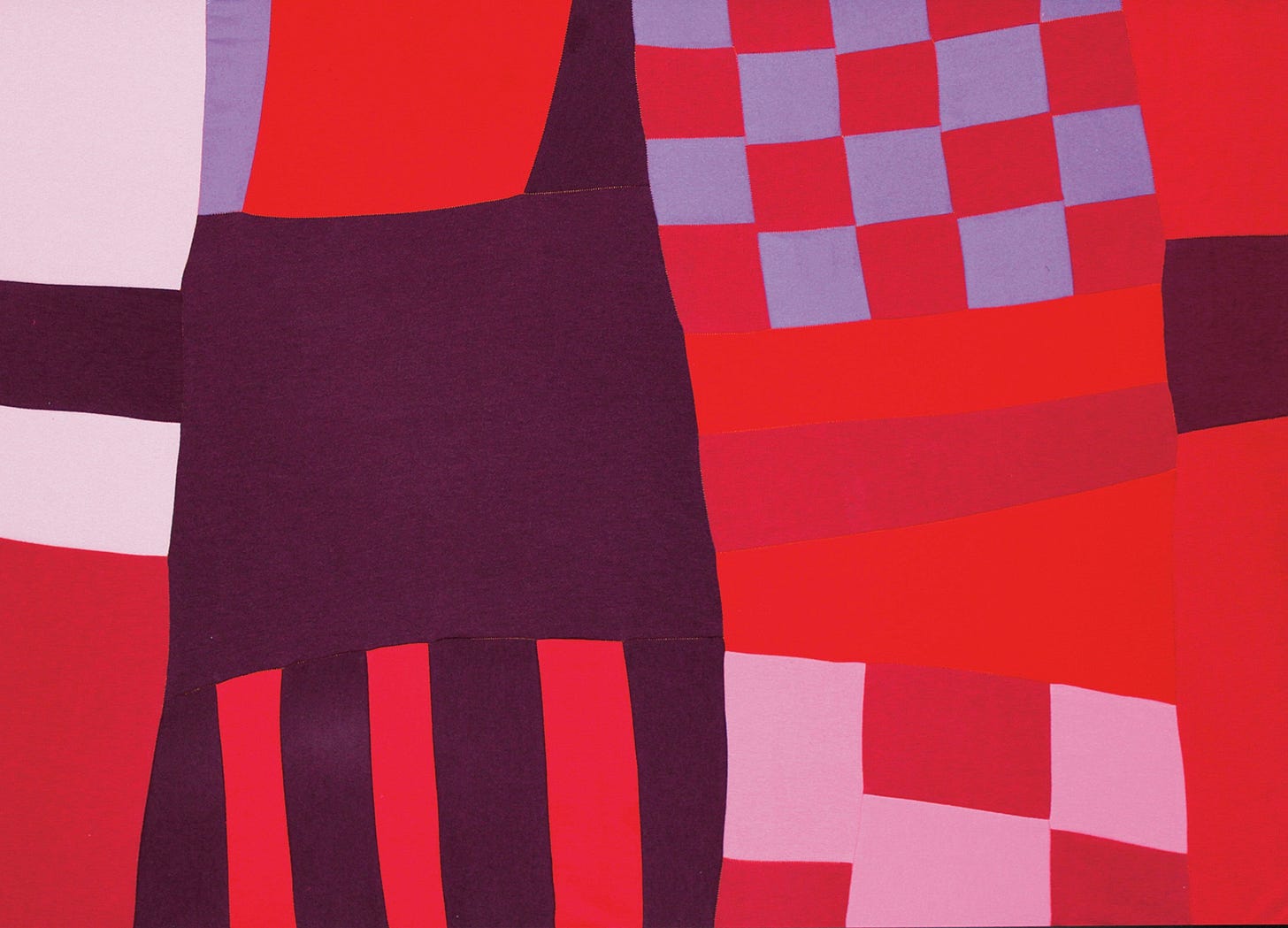
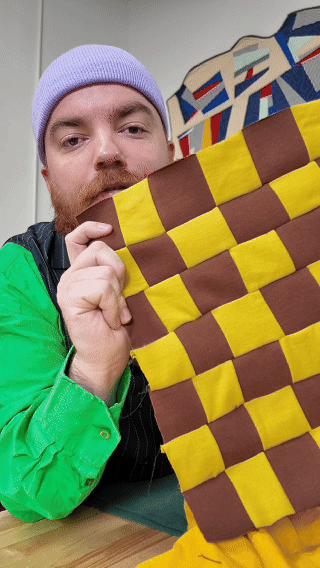




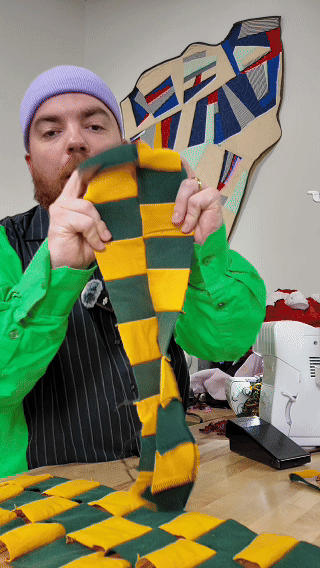
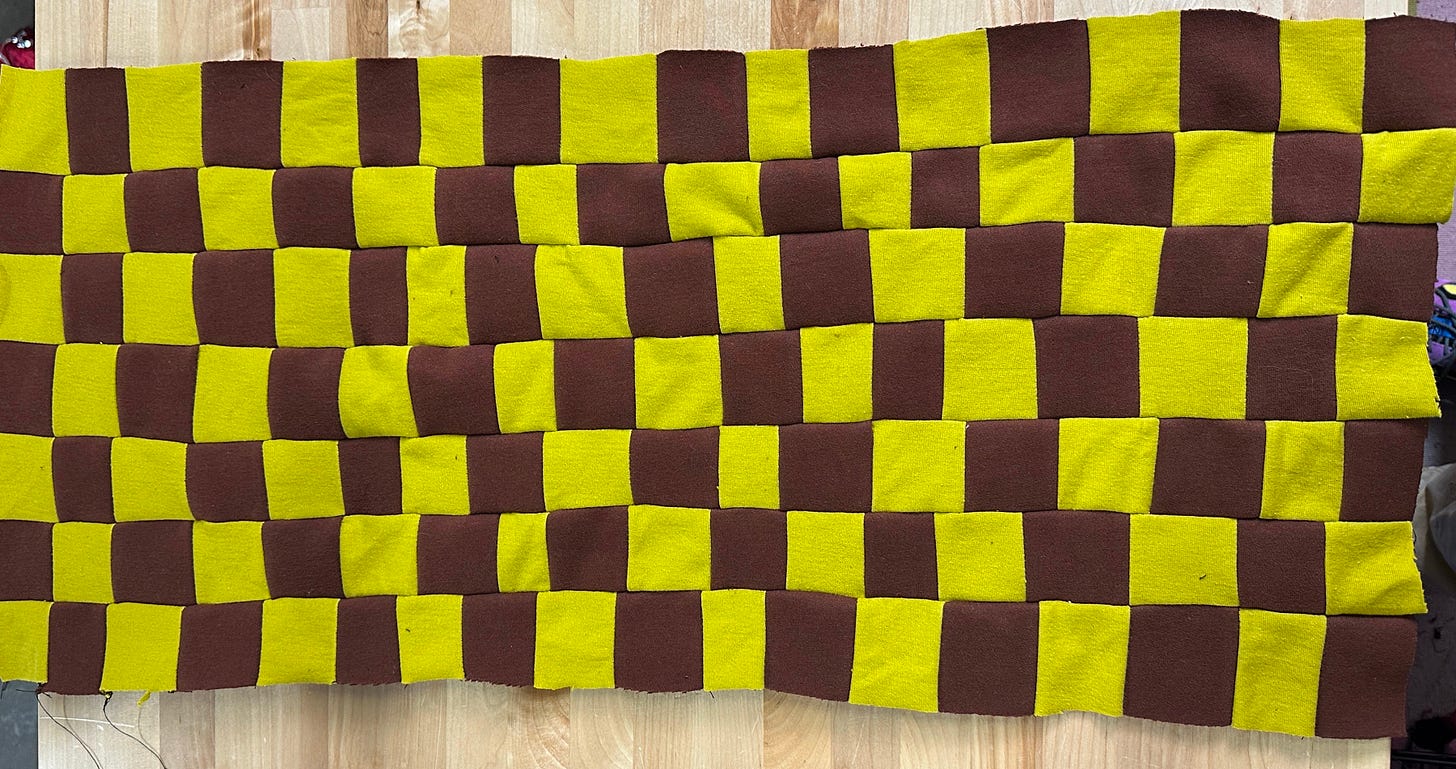

I absolutely love this!
I have an unfinished quilt project that I inherited. I love the colors—white and bright solids—and she left a few finished squares but I couldn’t really figure out what the finished project was supposed to look like, with sashing and edge. She left no instructions, but your work has convinced me that I don’t need any and I just need to play with it! Forget about matching points and symmetry! I’m going organic!